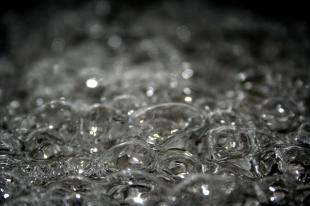Post date:
They could also be used to enhance cooling systems in smartphones and laptops, and make it possible to develop appliances that dry clothes more quickly using less energy.
Scientists have shown for the first time that tiny quantities of liquid can be brought to a boil if they are shaken at extreme speeds.
A team from the University of Edinburgh made the discovery using computer simulations.
Liquid layers one thousand times thinner than a human hair can be boiled using extremely rapid vibrations - a million times faster than the flapping of a hummingbird's wings.
The motion of the vibrating surface under the fluid is converted into heat as liquid molecules move and collide with each other, the team says.
It is only possible to use vibrations to boil extremely small quantities of liquid - contained within a few billionths of a meter above the vibrating surface, researchers say. Energy from vibrations applied to larger volumes instead produces tiny waves and bubbles, and only a very small amount of heat.
The team used the ARCHER UK National Supercomputing Service - which is operated by EPCC, the University's high-performance computing facility - to run its simulations.
The study, published in the journal Physical Review Letters, was supported by the Engineering and Physical Sciences Research Council.



